- in fenêtres by Administrateur
Comment installer l'Assistant Google sur Windows 10
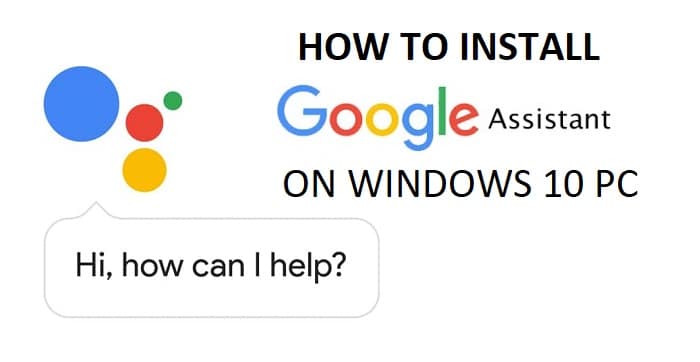
How to Install Google Assistant on Windows 10: Google Assistant is a virtual personal assistant rolled out by Google to Android devices to enter the AI assistants’ market. Today, many AI assistants are claiming to be the best, like Siri, Amazon Alexa, Cortana, etc. However, by far, Google Assistant is one of the best available on the market. The only problem with Google Assistant is that it’s not available on PC, as it is only available on mobile and smart home devices.

To get Google Assistant on PC, you need to follow command-line instructions, which is the only way to get it on PC. Anyway, without wasting any time, let’s see How to Get Google Assistant on Windows 10 with the below-listed guide’s help.
Comment installer l'Assistant Google sur Windows 10
Assurez-vous de créer un point de restauration au cas où quelque chose se passerait mal.
Pré-requis :
1. Tout d'abord, vous devez télécharger Python sur votre PC.
2. Download Python 3.6.4 from the link, then double-click on python-3.6.4.exe to run the setup.
3. Cochez «Add Python 3.6 to PATH,» puis cliquez sur Customize installation.
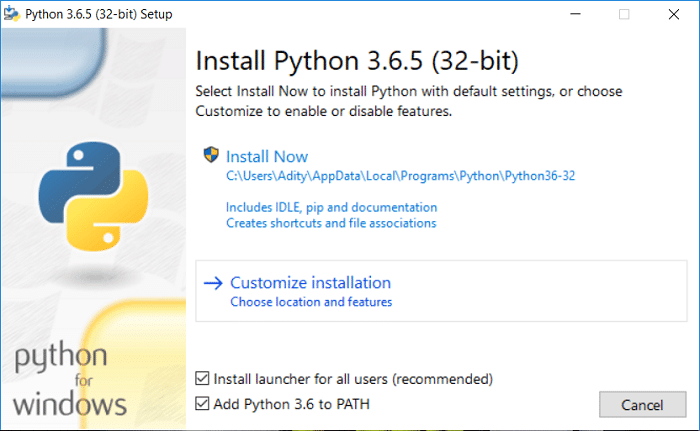
4. Make sure everything is checked in the window, then click Suivant.
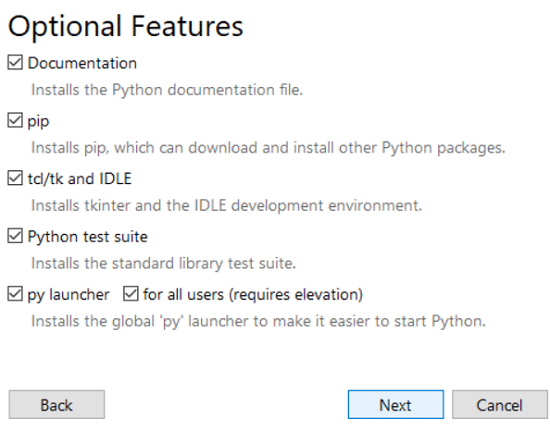
5. On the next screen, just make sure to coche "Add Python to environment variables. »
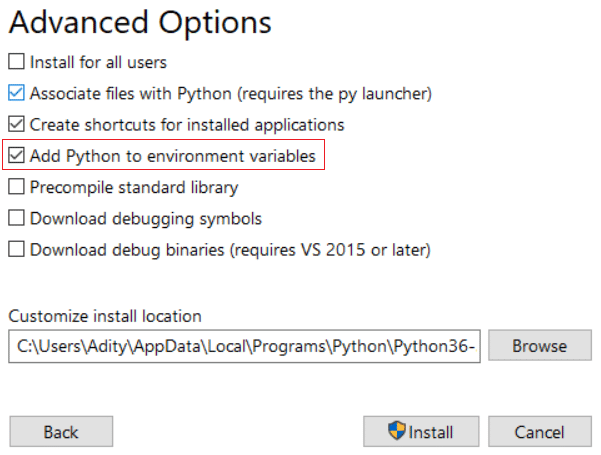
6. Click Install, then wait for Python to get installed on your PC.
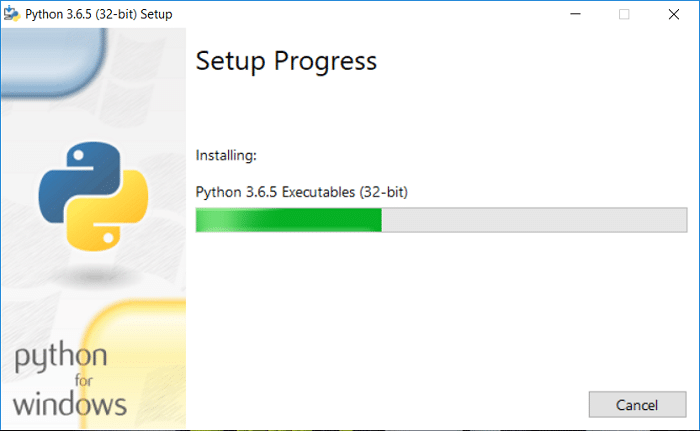
7. Once the installation is complete, restart your PC.
8. Now, press Windows Key + X, then select Invite de commande (Admin).
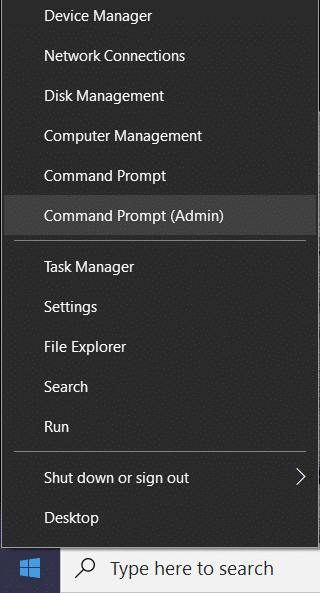
9. Tapez la commande suivante dans cmd et appuyez sur Entrée :
python

10. If the above command will return the current Python version on your computer, then you have successfully installed Python NumPy on your PC.
Étape 1: Configurer l'API de l'Assistant Google
With this step, you can use Google Assistant on Windows, Mac, or Linux. Just install the python on each of these OS to properly configure Google Assistant API.
1. Tout d'abord, accédez au Google Cloud Platform Console website et cliquez sur CREATE PROJECT.
Remarque: You might need to sign in with your Google account.
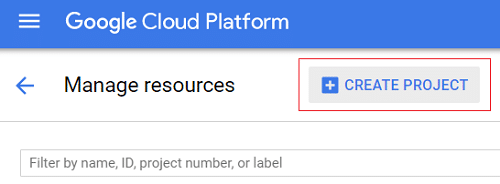
2. Name your project appropriately, puis cliquez sur Créer.
Remarque: Make sure to note down the project ID, in our case, its windows10-201802.
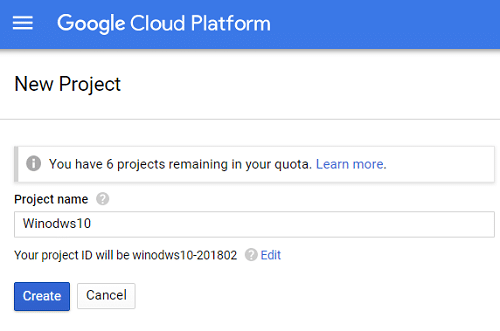
3. Wait till your new project is created (you will notice a spinning circle on the bell icon at the top right corner).

4. Once the process is done click on the bell icon and select your project.
![]()
5. On the project page, from the left-hand menu, click on APIs & Services, Puis sélectionnez Bibliothèque.

6. On the library page, search for “Assistant Google” (without quotes) in the search console.
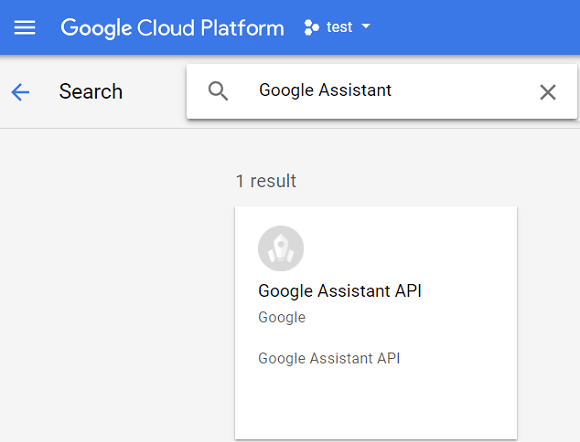
7. Click on Google Assistant API search result and then click on Activer.
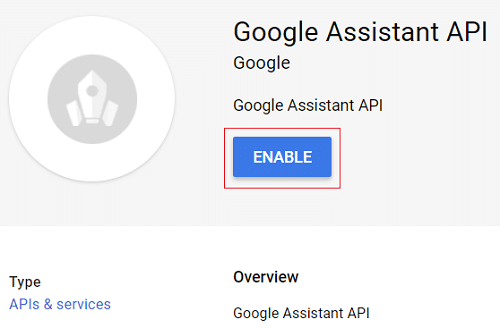
8. Now, from the left-hand menu, click on Credentials, then click “Création Lettres de créance», Puis sélectionnez Help me choose.

9. Choose the following information on the “Add credentials to your project” screen:
Question: Which API are you using? Answer: Google Assistant API Question: Where will you be calling the API form? Answer: Other UI (e.g. Windows, CLI tool) Question: What data will you be accessing? Answer: User data
10. After answering all of the above questions, click on “De quelles informations ai-je besoin?" .
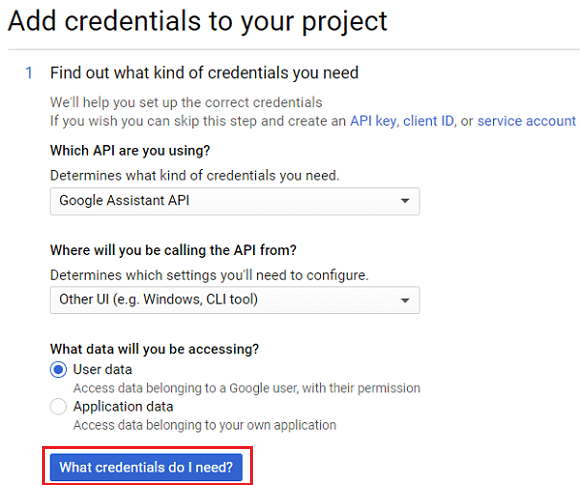
11 Sélectionner Set up consent screen and choose the Application type to Interne. Type the project name in the Application name and click Enregistrer.
12. Again, go back to the “Add credentials to your project” screen, then click on Créer des identifiants et sélectionnez Aide moi à choisir. Follow the same instructions as you did on step 9 and proceed forward.
13. Suivant, type the name of the Client ID (name it anything you like) to create OAuth 2.0 client ID et cliquez sur le Create Client ID .
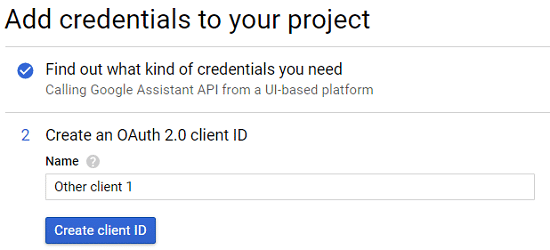
14. Cliquez Terminé, then open a new tab and go to Activity controls from ce lien.
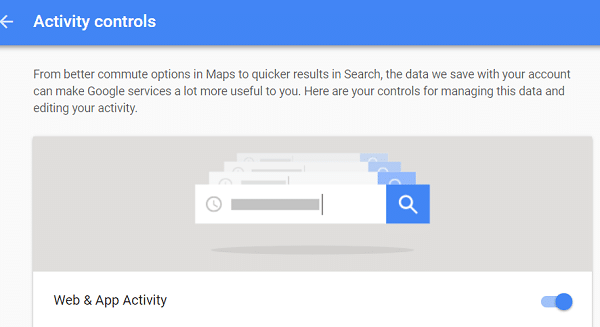
15. Make sure all the toggles are turned ON puis revenir à la Credentials tab.
16. Cliquez sur l'icône de téléchargement in the far right of the screen to download the credentials.
![]()
Remarque: Save the credentials file somewhere easily accessible.
Étape 2: Install Google Assistant Sample Python Project
1. Appuyez sur la touche Windows + X puis sélectionnez Invite de commande (Admin).

2. Tapez la commande suivante dans cmd et appuyez sur Entrée après chacune :
py -m pip install google-assistant-sdk[samples]

3. Once the above command finishes executing, type the below command and hit Enter.
pip install --upgrade google-auth-oauthlib[tool]
4. Navigate to the JSON file location that you downloaded earlier and faites un clic droit dessus et sélectionnez Propriétés. In the name field, copy the file name and paste it inside notepad.
5. Now enter the below command but make sure to replace the “path/to/client_secret_XXXXX.json” with the actual path of your JSON file which you copied above:
google-oauthlib-tool --client-secrets path/to/client_secret_XXXXX.json --scope https://www.googleapis.com/auth/assistant-sdk-prototype --save --headless

6. Once the above command finishes processing, you get a URL as the output. Assurez-vous de copy this URL as you will require it in the next step.
Remarque: Don’t close the Command Prompt just yet.

7. Open your Web browser and navigate to this URL, then select the same compte Google that you used to configure the Google Assistant API.
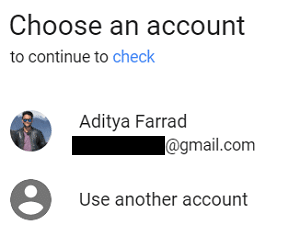
8. Assurez-vous de cliquer sur Autoriser to grant the necessary permission to run Google Assitant.
9. On the next page, you will see some code that will be your client’s Access Token.

10. Now switch back to the Command prompt and copy this code & paste it into cmd. If everything goes alright you see an output that says that your credentials have been saved.

Étape 3: Testing Google Assistant on Windows 10 PC
1. Appuyez sur la touche Windows + X puis sélectionnez Invite de commande (Admin).

2. Now we need to test if Google Assistant can properly access your microphone. Type the below command into cmd and hit Enter, which will start a 5-second audio recording:
py -m googlesamples.assistant.grpc.audio_helpers
3. If you can successfully hear the 5-second audio recording back, you can move to the next step.
Remarque: You can also use the below command as an alternative:
googlesamples-assistant-audiotest --record-time 10
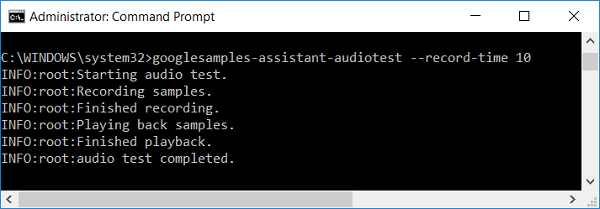
4. You need to Register your Device before you can start using Google Assistant on Windows 10 PC.
5. Next, type the below command and press Enter:
cd C:GoogleAssistant
6. Now type the following command but replace the “ID-projet” with the actual project id that you have created in the first step. In our case it was windows10-201802.
googlesamples-assistant-devicetool --project-id register-model --manufacturer "Assistant SDK developer" --product-name "Assistant SDK light" --type LIGHT --model "GA4W"

7. Next, to enable Google Assistant Push to Talk (PTT) capabilities, enter the below command below but make sure to replace “ID-projet” with the actual project id:
py -m googlesamples.assistant.grpc.pushtotalk --device-model-id “GA4W” --project-id
Remarque: The Google Assistant API supports every command that Google Assistant supports on Android and Google Home.
You have successfully installed & configured Google Assistant on your Windows 10 PC. Once you enter the above command, simply press Enter and you can ask any questions directly to Google Assistant without having to say “OK, Google” command.
Recommandée:
Nous espérons que ce guide vous a été utile et que vous avez pu install Google Assistant on Windows 10 PC without any issues. But if you still have any questions regarding this guide, then feel free to ask them in the comment section.